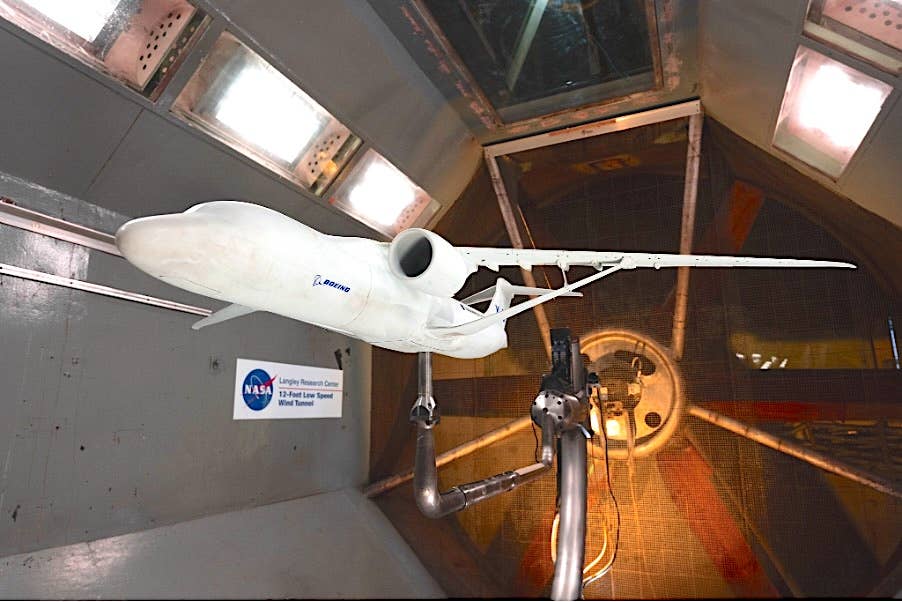NASA Completes Initial Tests On X-66 High-Efficiency Airliner Design
High-aspect-ratio diagonally strutted wing is key to aerodynamics.

Credit: NASA
NASA reported last week its X-66 Sustainable Flight Demonstrator (SFD) project has completed its first round of low-speed wind tunnel testing at the Langley Research Center in Hampton, Virginia. The trials collected measurements on lift and drag under multiple aerodynamic configurations and flight conditions.
The X-66 concept incorporates an “extra-long” (high aspect ratio) strut-braced transonic wing for minimal drag and high aerodynamic efficiency. The ultimate goal is to create a more fuel-efficient airliner. The wind tunnel model has a wingspan of close to 6 feet and was tested in the 12-foot wind tunnel.
Researchers are analyzing data to determine if design changes or adjustments are advisable going into the next phase of high-speed wind tunnel testing. Multiple rounds of testing with models are designed to contribute to configuring a full-size model for flight testing.






